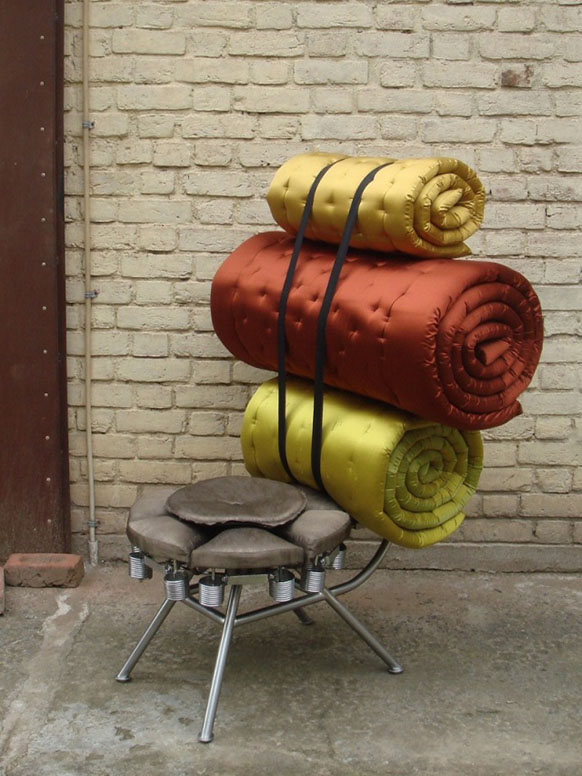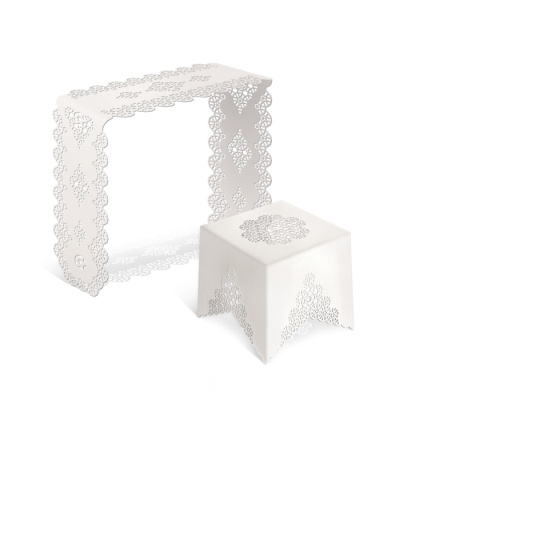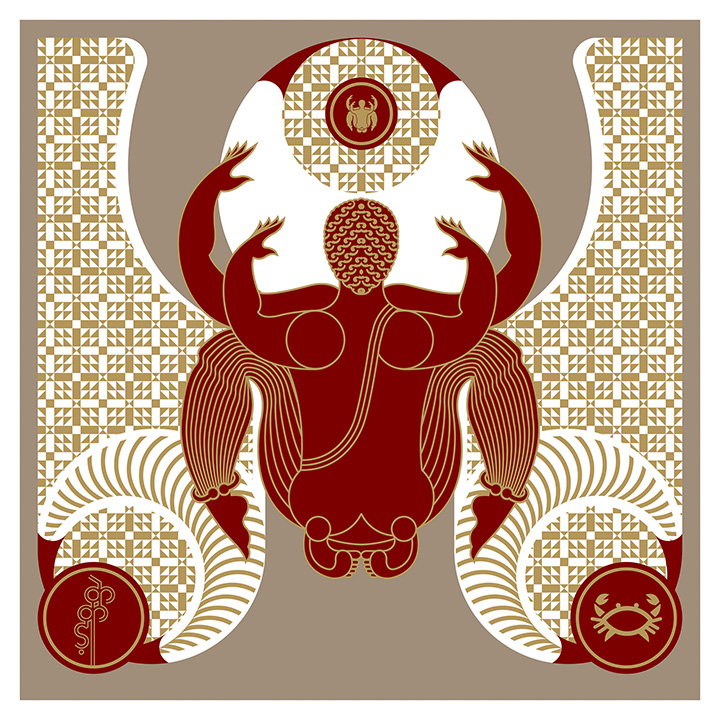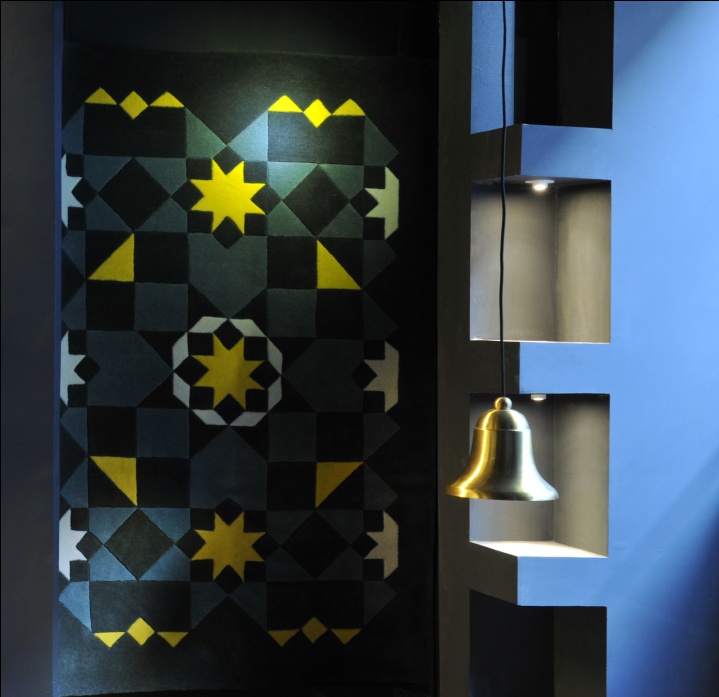The pursuit of design as an element of luxury in India is not such an easy task. Particularly for the indigenous design industry in the country.
Ask any Indian designer, and I mean a product designer here, if it is easy to sell in a market where ‘good design’ is synonymous with ‘international designers’. It is rather rare to find an Indian designer who has made inroads abroad. When Gunjan Gupta’s Wrap, a global design house located in New Delhi, exhibited her ornate and contemporary India-inspired bespoke furniture at the Milan Furniture Show, Ventura Lambrate last year, it proved to be a turning point for the India Modern movement.
It was a tiny step for her studio, but a rather large one for the ridiculously fragmented Indian design industry, which is struggling for recognition. We have centuries-old, embarrassingly rich craft base, and yet, we’ve been unable to leverage it to create a strong indigenous design industry.
Don’t get me wrong: India boasts some amazing boutique design houses like Wrap, or Divya Thakur’s Mumbai studio, Design Temple, which has toiled hard to contemporarise desi design. Thakur’s newest collection of furniture, accessories and digital art draws on our spiritual and design traditions to give us beautiful pedestals-cum-tables-cum urlis in new-age materials (assembled in two parts – use it as a modern-day urli or a deep bowl in which you float flowers, or use it as a pedestal to place an artefact or a plant); art inspired by the country’s erotic-spiritual traditions; and even furniture with carved edgings that is nostalgically evocative of the pretty dollies our mothers used to cover their precious tables and their black-and-white television sets with.
Adding heft to the burgeoning design industry are the retail majors: Good Earth’s Anita and Simran Lal are responsible for ensuring that Indian design is no longer synonymous with craft, and Bungalow 8 top-lined by Maithili Ahluwalia, who constantly promotes new design talent from the country and abroad.
The growing cadre of trailblazing figures, however, finds itself struggling to leave an impact on the overall design-scape in India. And to think that once, the country was a design hothouse. Design permeated everything – our homes, the jewels and clothes we wore, the way we decorated our little stores, even the manner in which the street vendors displayed their wares!
What fails us is our non-existent infrastructure: besides a National School of Design in Ahmedabad and the Srishti School of Art, Design and Technology in Bangalore, design education in India is at its nadir even 54 years after independence. What fails us is also investment by the tycoon class and the corporate czars: the boutique design houses and studios lack the financial heft to scale up and reach a bigger audience, unless they are backed up large a corporate.
Design, to be taken seriously, has to move from the pure luxury space to a bridge-to-luxury one. What we need is a sort of Zara-esque entity (interestingly, in India, we view Zara as ‘affordable luxury’ rather than high street, as the rest of the world does). Or, for a more relevant reference, an Indian version of the Italian product design major Alessi, which retails innovative collections from top notch product designers from across the globe.
Is there a way out of this vexing situation? Questions like these have propelled sugar baroness and design impresario Rajshree Pathy, and her daughter Aishwarya, to create a platform like the India Design Forum. In its second edition, IDF 2013, which began in Mumbai on March 11, will host a series of workshops, talks and debates. The exhaustive list of speakers and workshop leaders spans diverse design areas like fashion, product design, architecture and art.
The names the event has managed to draw to Mumbai’s shores for the 2013 edition are impressive: shoe designer Christian Louboutin; Nipa Doshi of the British design powerhouse Doshi-Levien; architect Asif Khan; Keith Khan, a leading creative thinker and artist from the UK; Sabyasachi Mukherjee – the man who renegotiated the minefield of derivative Indian fashion to bring to us an aesthetic that digs deep into our textile heritage; Abraham Thomas, Curator, Victoria & Albert Museum; Arturo Dell’Acqua Bellavitis, Chairman of the Triennale Design Museum & Dean, School of Design, Politecnico of Milano; Dr Isher Judge Ahluwalia, Chairperson, Indian Council for Research on International Economic Relations; Polish architect Jakub Szczesny; Marije Vogelzang, Food Designer from Netherlands, and many more luminaries.
As a lead-up to the actual conference on 15 and 16 March at the sea wind-swept, beach-fronted National Centre for Performing Arts, a raft of disparate events are being held across four design neighbourhoods, where a slew of high-profile architectural and design studios, and home stores are located.
The vision that has fed IDF’s growth over the last two editions is much bigger. “It is to lobby for institution building. It is to focus attention on the crucial role design plays in our daily life. It is to help formulate policies, and coax the corporate sector to invest and create several world-class design companies,” says Rajshree, who is known for her individual take on fashion, and her love for art and design. “India is one of the largest consumers of design, be it automobile, textile, industrial and product. So there’s no end to the need for design professionals. But CEO’s view it as handicraft, which is not true.”
The CEO’s cannot be blamed. For years, soggy socialism and a closed society have ensured that design was seen as ‘flaky’ or ‘flippant’. Our cities are full of ugly buildings and our urban landscape is grotesquely grey, thanks to a socialist legacy from our early years as a nation.
Socialism, thankfully, is in the past.
However, now we are grappling with another extreme. In the India of today, design is synonymous with luxury. And it is. But there is more to design. There is functional design that drives our daily lives – our smart phones, our computer interfaces, our homes and buildings, our fashion sensibility… And Indians can play a rather significant role here.
As Egyptian-American designer Karim Rashid said at an IDF talk last year, “We do not know Indian (design) brands, but we should, considering India have the knowledge, infrastructure, intelligence, and a rich culture to offer to the world.” Here is hoping that we create enough Indian brands so that the next time we check into a hotel within this country, we luxuriate in a suite that is outfitted with the best of Indian furniture, lighting and even faucets.






